How to Make Hollandaise Sauce
Updated Jun 23, 2025
Hollandaise sauce is actually really easy to make, with just three ingredients. Learn how to make it to serve over eggs, veggies, & seafood!
This post may contain affiliate links. Please read our disclosure policy.
Hollandaise sauce is one of those classic recipes that feels (let’s be real… IS) intimidating to make, but once you get the hang of it, you’ll be golden, I promise. Learning how to make hollandaise sauce is easier than it seems, and the payoff is so worth it.
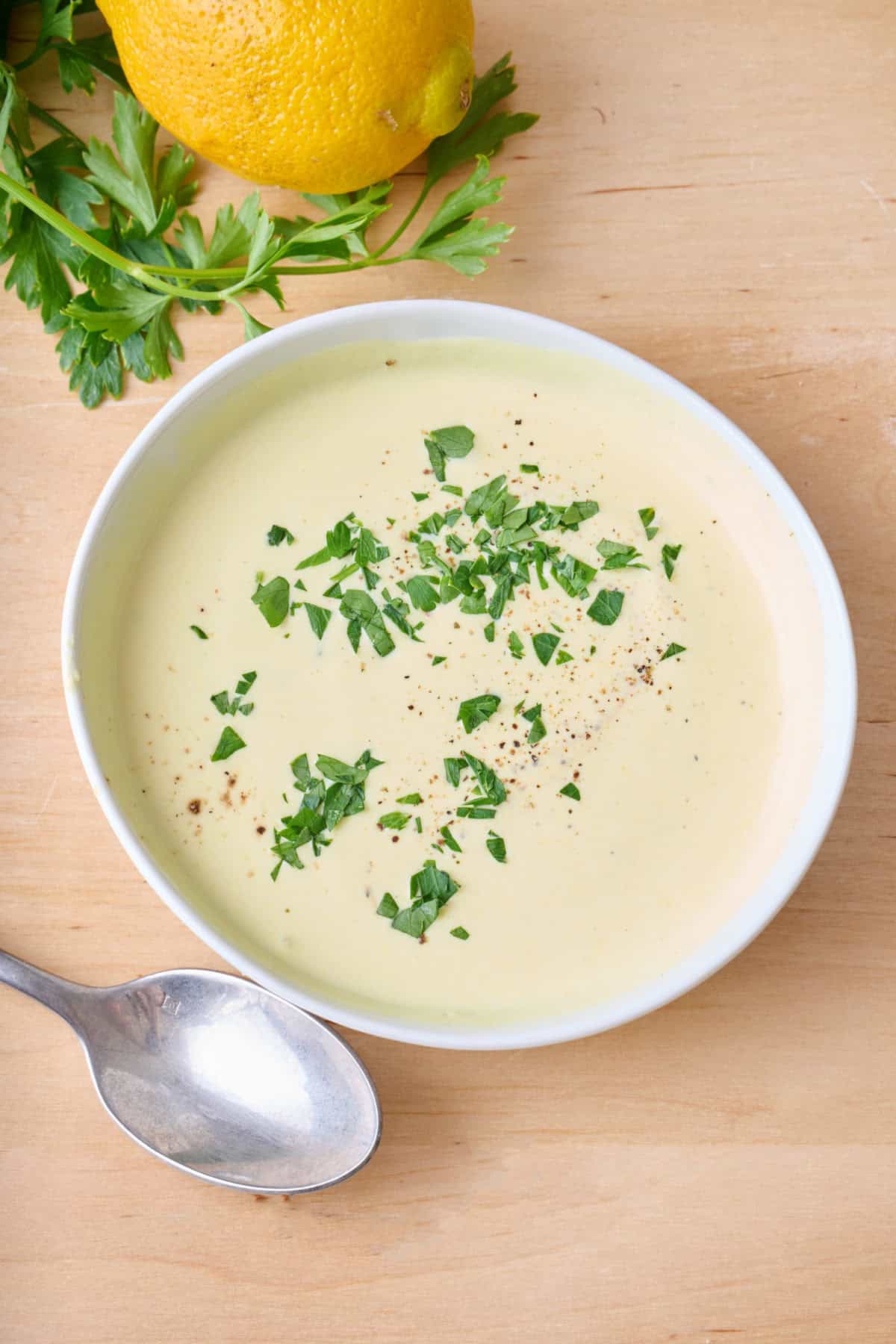
Jump to Section
I remember the first time I made hollandaise sauce —I was nervous about getting the eggs just right and not ending up with scrambled eggs instead of a silky sauce! So if you’re nervous, I get it, but it’s really not hard to make!
Why Learn How to Make Quick Hollandaise Sauce
- Instantly add flavor, texture, and richness. Knowing how to make quick hollandaise sauce is a sophisticated yet simple way to dress up veggies or poached eggs.
- Expand your culinary skills. Classic hollandaise sauce is one of five ‘mother sauces’ that are foundational if you want to take your cooking to the next level. Fun fact: Bechamel sauce is another mother sauce that’s worth making at home!
- Simple ingredients with no special tools. My recipe for making hollandaise sauce uses the most basic ingredients (you probably already have everything on hand) and a makeshift double boiler. No blender, no special pots, and no obscure ingredients.
Ingredients to Make Hollandaise Sauce

- Egg yolks: This serves as the base for hollandaise sauce as it is emulsified with butter to create a rich and thick sauce.
- Lemon: Adds a touch of acidity and tangy flavor to balance the richness of the butter and egg yolks. Like egg yolks, fresh lemon juice is a must in the making of a classic Hollandaise sauce.
- Butter: This is the main fat in the sauce, and when mixed with the egg yolks, helps give the sauce stability and structure. Use unsalted butter to better control the saltiness of your hollandaise sauce.
- Salt & Pepper: Salt enhances the overall flavor of the sauce while freshly cracked black pepper gives it a nice kick.
How to Make Hollandaise Sauce
Hollandaise sauce is often considered one of the most trickiest sauces to make at home because the ingredients need to be just right to avoid separation. But stick around and I’ll show you how to achieve this velvety French sauce with ease, confidence, and no wasted ingredients. A perfectly smooth hollandaise sauce starts with melting butter over medium-low heat. Using warm butter is key for proper emulsification. From there, melted butter is slowly added to whisked eggs and combined to form a thick, rich sauce that we all know as Hollandaise sauce.
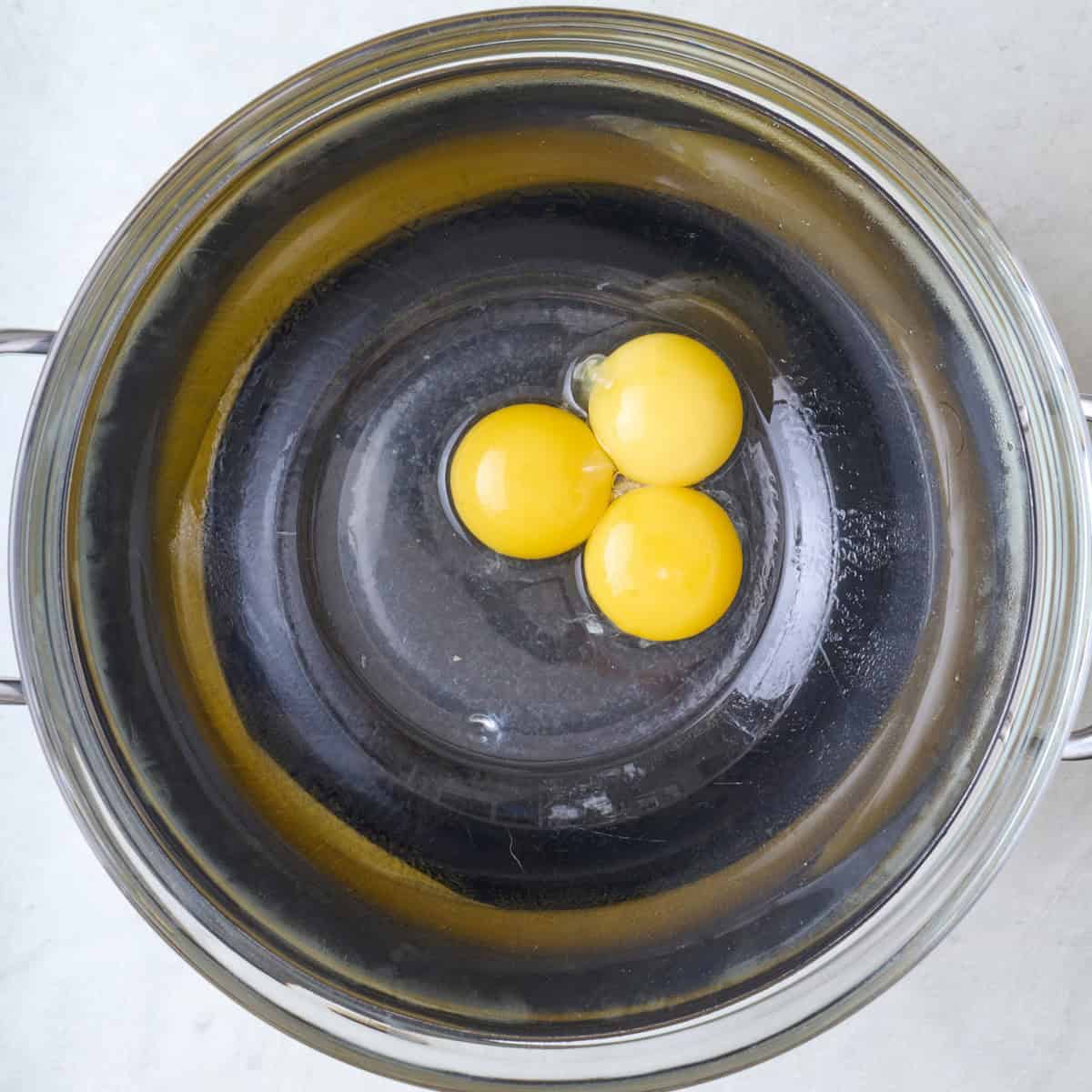
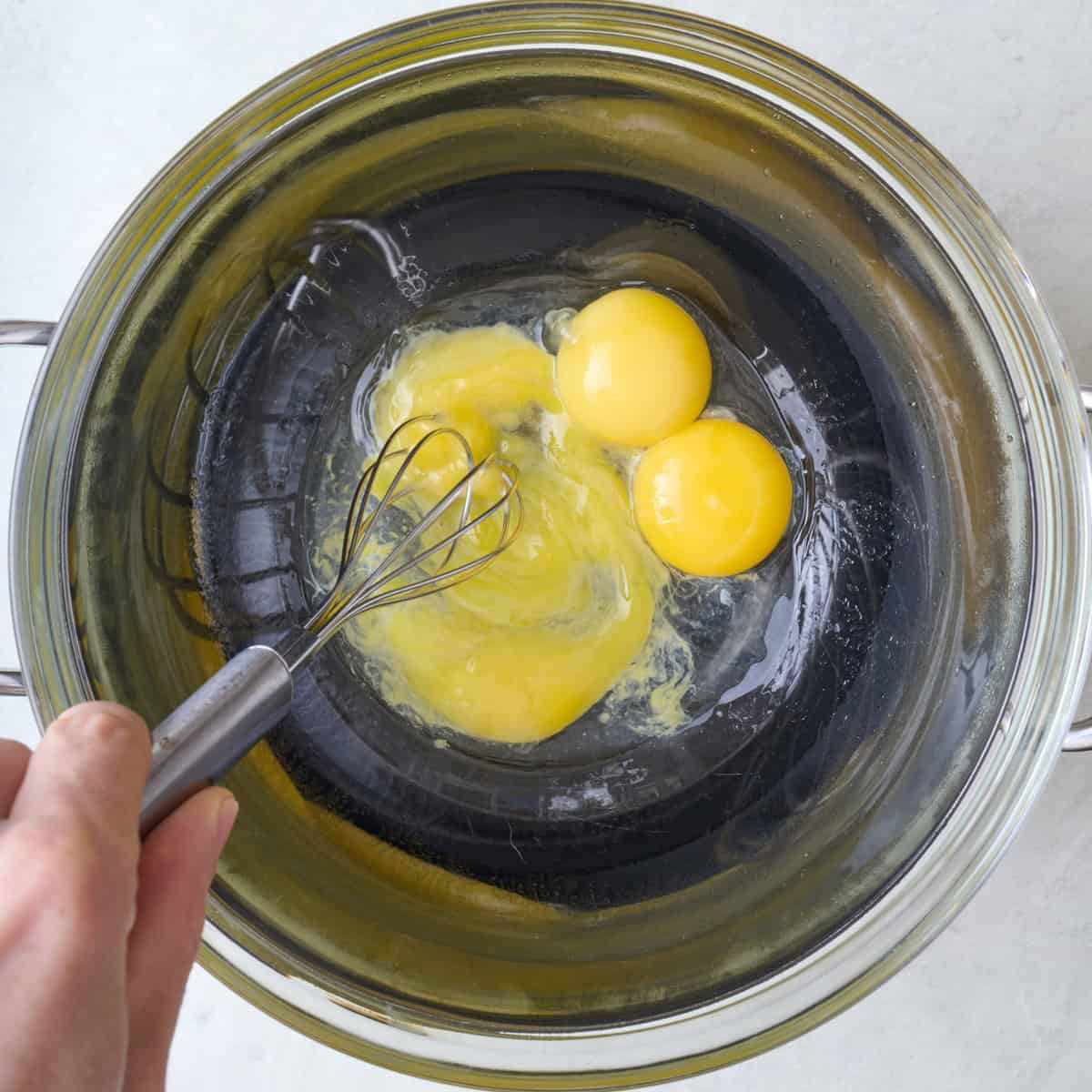

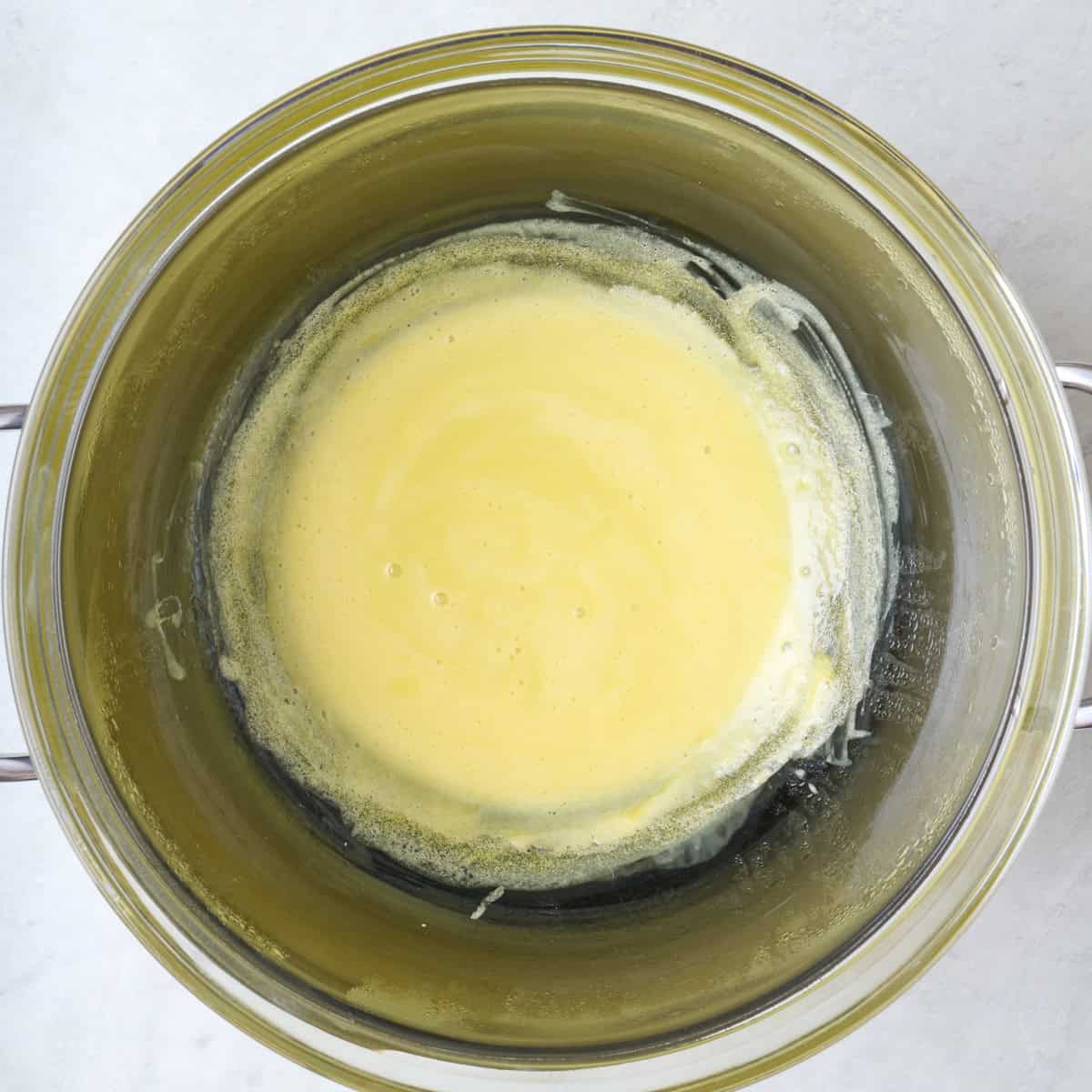
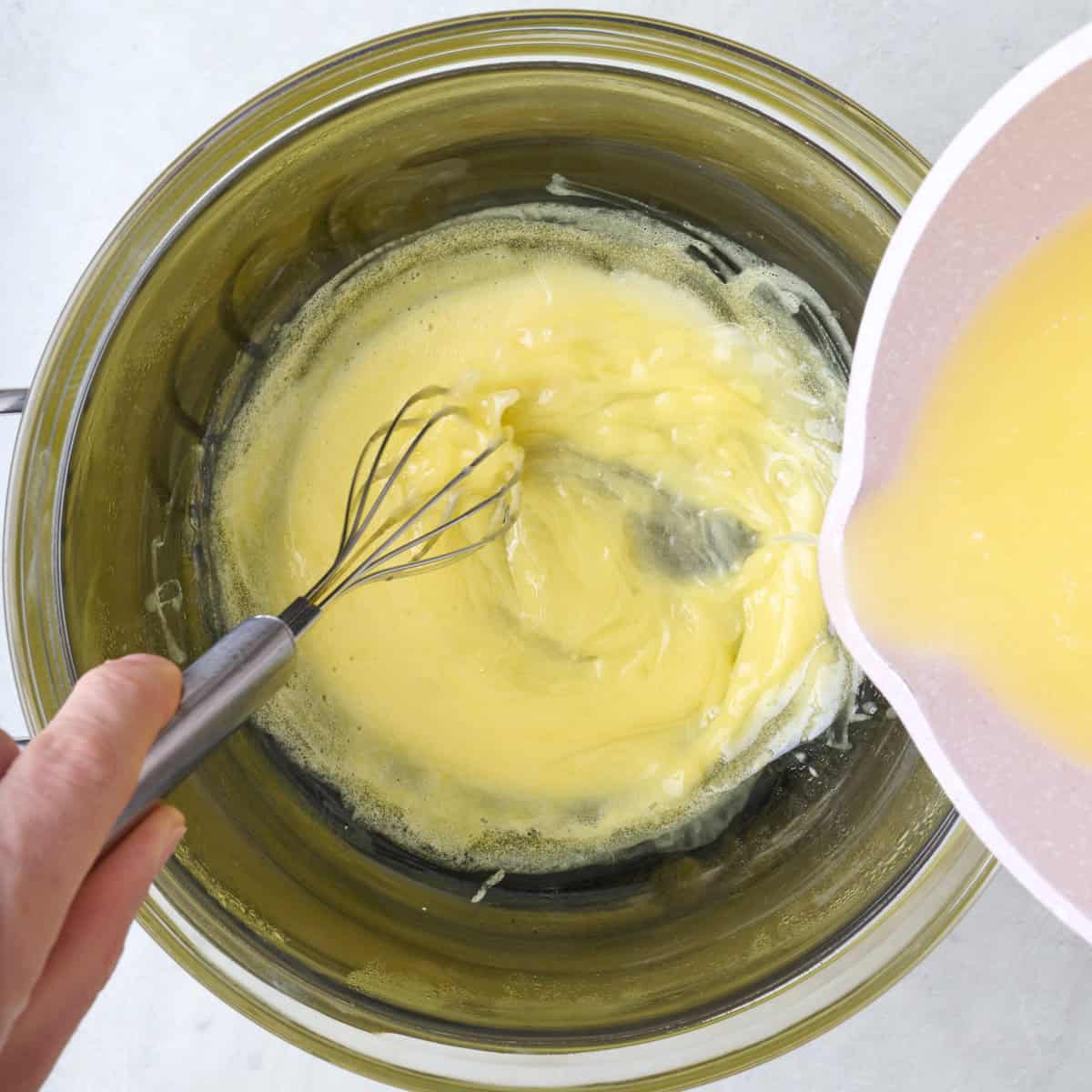
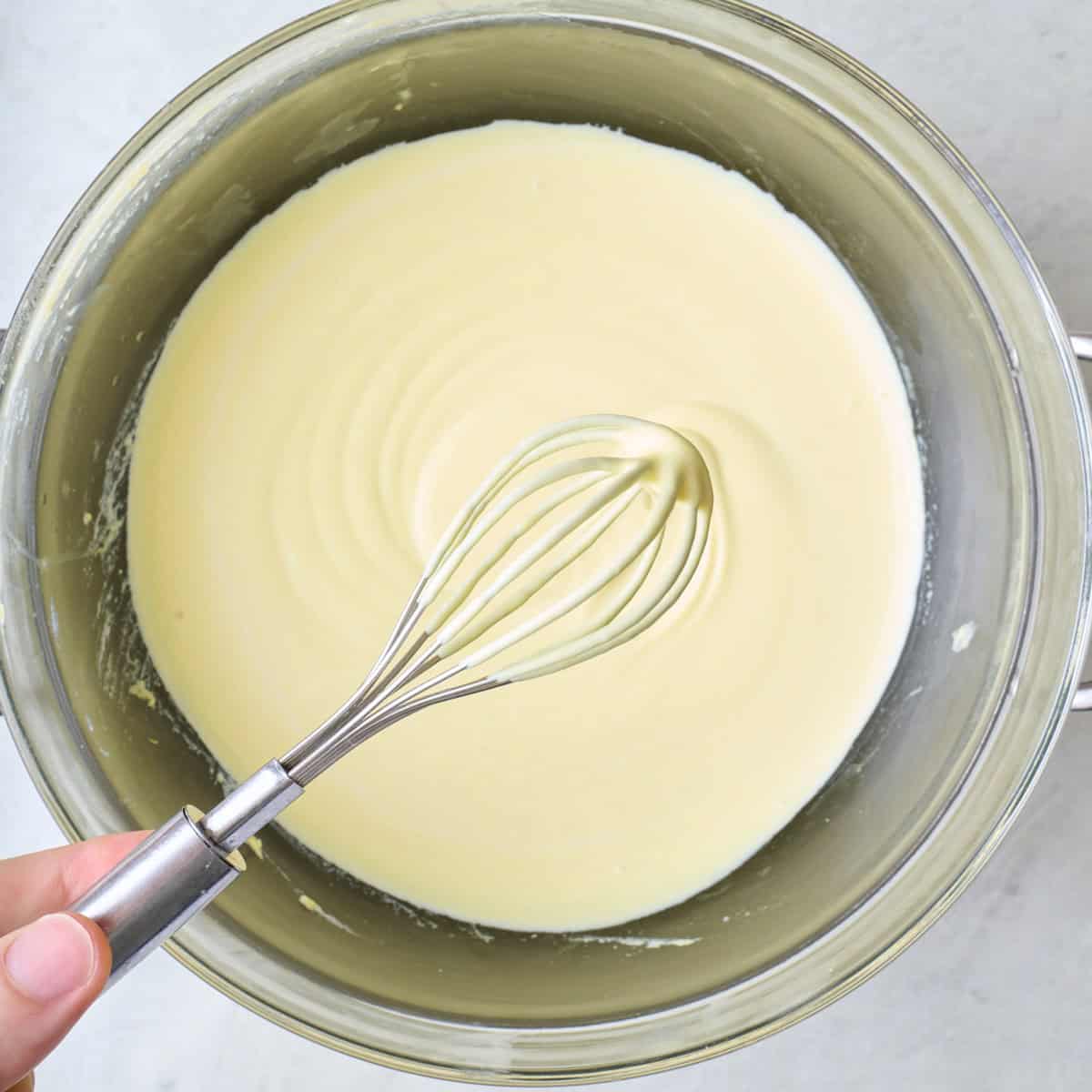
Tips for Making Hollandaise Sauce at Home
- Set the double boiler properly. You don’t need to go out to buy a double boiler. Set up a makeshift double boiler by placing a heat-safe bowl over a small saucepan with a few inches of simmering water.
- Separate egg yolks from whites while cold. Although using room temperature ingredients is essential to help them emulsify better, it’s easier to separate the egg yolks from the whites when the eggs are chilled. Then set the bowl of egg yolks aside to let them come to room temperature.
- Watch the heat. Keep the heat on medium-low, constantly whisking the egg mixture, and make sure the bottom of the bowl does not touch the water in the double boiler. Keeping the eggs over gentle heat will prevent them from curdling and becoming scrambled.
- Don’t rush the butter. The key to success is to make sure you add the butter a little at a time, whisking constantly. You want to temper the eggs by adding a small amount of the hot butter to the egg mixture. Adding too much at once may break the sauce.

Recipes to Make with Classic Hollandaise Sauce
- Pan Seared Salmon
- Breakfast Egg Strata
- Veggie Omelet
- Sweet Potato Breakfast Bowl
- Cauliflower Waffles
Frequently Asked Questions
Hollandaise is one of those recipes that is best enjoyed right away. If you must, you can store it in the fridge for up to 1 day and reheat in the microwave at 10-second intervals until warmed through.
To fix a broken or split hollandaise, you can try adding it to a high speed blender and mixing for about one minute to see if you can get it to come back together.
The finished hollandaise sauce should be smooth, firm, but have pourable consistency. If it’s too thick, you can simply whisk in a splash or two of warm water. But always start low and adjust as needed.
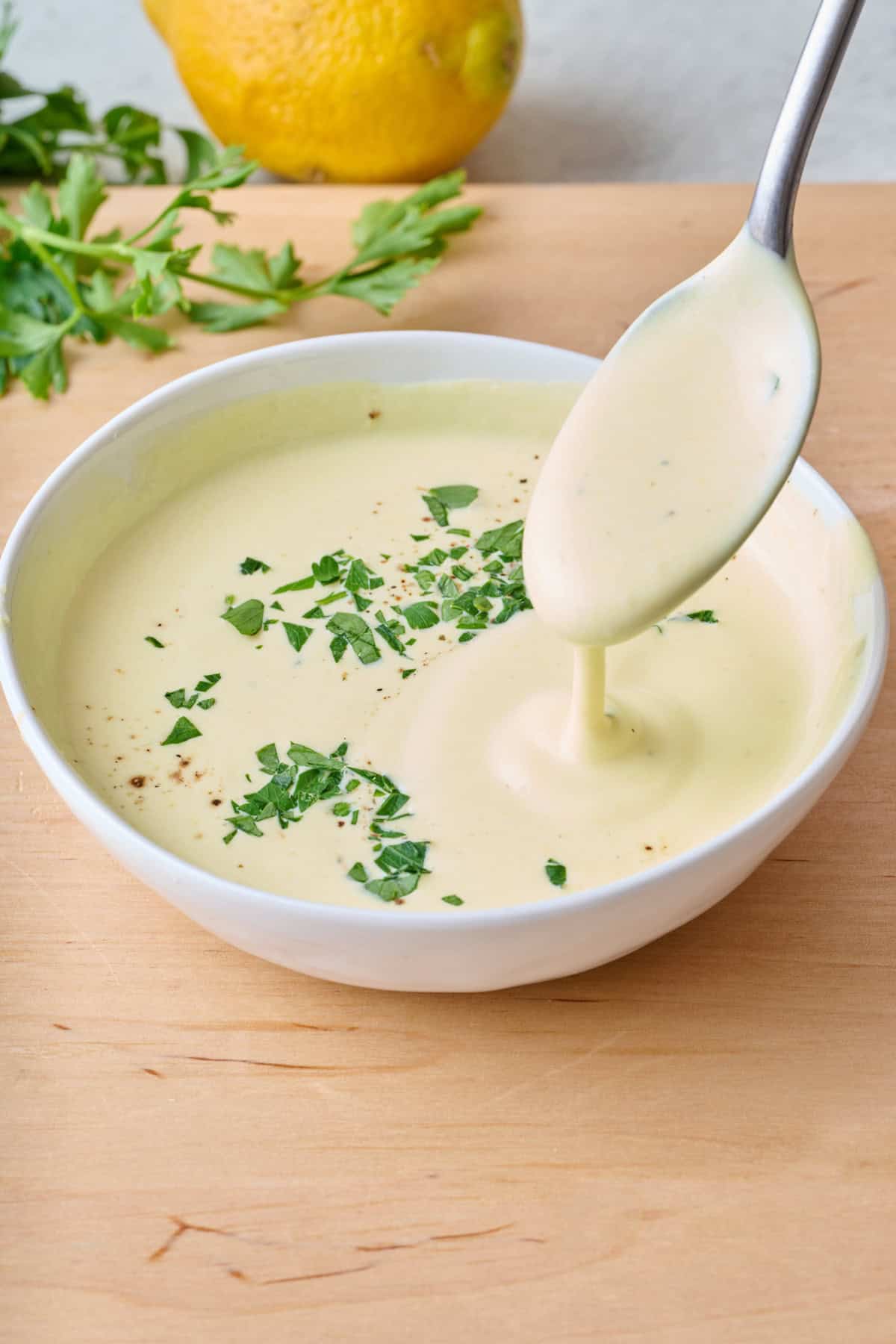
Knowing how to make hollandaise sauce by hand will help you transform your breakfast into a special affair. It’s a small yet delicious way to spoil your family and friends with a restaurant-quality meal at home, adding a touch of fancy and rich flavor to dishes like eggs Benedict, steamed asparagus, poached fish, and more.
More Cooking Tutorials:
- How to Make Balsamic Glaze
- How to Make Pesto
- How to Make Chimichurri
- How to Make Cilantro Yogurt Sauce
- How to Make Tzatziki Sauce
- How to Make Garlic Sauce (Toum)
- How to Make Tahini Sauce
- How to Make Cucumber Yogurt Sauce
If you found this tutorial for How to Make Hollandaise Sauce helpful or if you try any recipe on Feel Good Foodie, then don’t forget to rate the recipe and leave a comment below! It helps others who are thinking of trying out this tutorial and we would love to hear about your experience. And if you snapped some shots, share it on Instagram so we can repost on Stories!

How to Make Hollandaise Sauce
Video
Ingredients
- 3 egg yolks at room temperature
- 2 teaspoons fresh lemon juice
- 6 ounces (12 tablespoons) unsalted butter
- ¼ teaspoon salt
- black pepper to taste
Instructions
- Place butter in a small saucepan and melt over medium-low heat. Set aside.
- Place egg yolks, ½ tablespoon water and lemon juice in a heat-safe bowl. Set up a double boiler by placing a few inches of water in a medium saucepan that the bowl fits well on. Make sure the water does not hit the bottom of the bowl. Bring the water to a simmer and set the bowl on top. Cook, whisking the egg yolks constantly for 5 to 7 minutes, or until the egg yolks begin to thicken and ribbon on themselves when you hover the whisk over the bowl.
- Slowly start adding the melted butter into the egg yolks, whisking constantly to keep the emulsion stable. Continue, adding a little butter at a time, until all of the butter has been incorporated and the sauce is smooth and creamy. Remove from heat and season with salt and pepper. Serve immediately.
Notes
Nutrition
Nutrition information provided is an estimate. It will vary based on cooking method and specific ingredients used.





